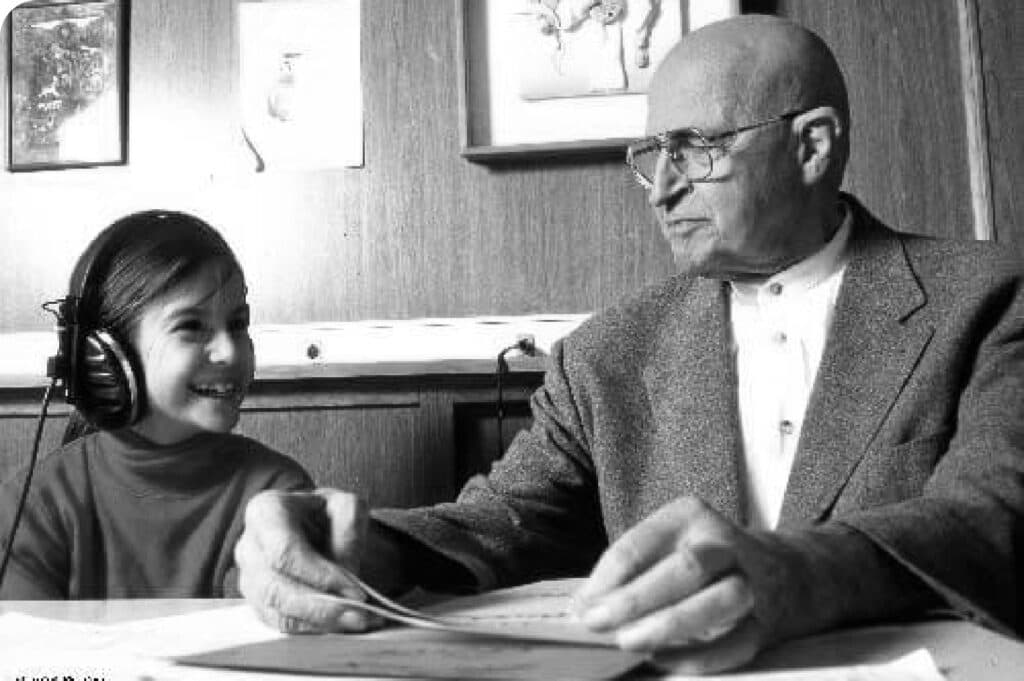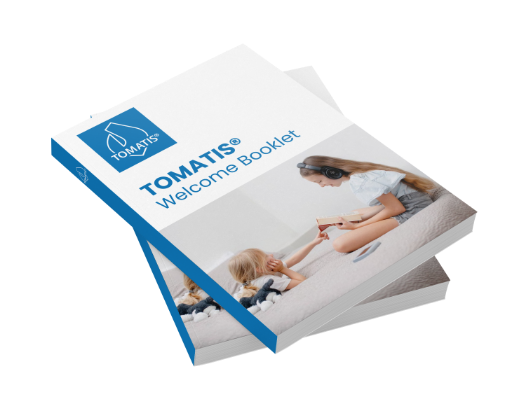Η ΜΕΘΟΔΟΣ TOMATIS®
Μεταμορφώνοντας ζωές μέσα από καινοτόμες νευροαισθητηριακές λύσεις
Πρόγραμμα Νευροδιέγερσης βασισμένο στον ήχο για θέματα Ακουστικής Επεξεργασίας, τα οποία επηρεάζουν την Κίνηση, τον Συντονισμό, το Συναίσθημα, την Προσοχή, την Μάθηση, τον Λόγο, την Ομιλία, ακόμη και τις Διαταραχές του Αυτιστικού Φάσματος.
Πάνω από 0 χρήστες
0 ειδικοί παγκοσμίως
Πάνω από 3.000.000 χρήστες
4000 ειδικοί παγκοσμίως
90 επιστημονικές μελέτες
Τι είναι η Μέθοδος Tomatis®;
Η Μέθοδος Tomatis® είναι ένα ισχυρό πρόγραμμα νευροαισθητηριακής διέγερσης, το οποίο βελτιώνει τις κινητικές δεξιότητες, τα συναισθήματα και τη νόηση μέσω της μουσικής και της γλώσσας.
-

Γιατί Tomatis®;
Η Μέθοδος Tomatis® είναι ασφαλής,μη παρεμβατική και επιστημονικά τεκμηριωμένη. Με 60+ χρόνια εμπειρίας και αποτελεσματικότητας, σε συνδυασμό με την τεχνολογία της εταιρείαςμας, η Μέθοδος Tomatis® μεταμορφώνει ζωές. Διαβάστε περισσότερα ώστε να μάθετε γιατί.
-

Η Επιστήμη
Τα περισσότερα ερεθίσματα του εγκεφάλου μας προέρχονται από το αυτί. Η Μέθοδος Tomatis® δέχεται το αυτί ως την πύλη προς τον εγκέφαλο, αξιοποιώντας τη νευροπλαστικότητα για την επανασύνδεση και επανεκπαίδευση του εγκεφάλου.
-

Το Πρόγραμμα Ακουστικής Εκπαίδευσης
Σκεφτείτε το πρόγραμμα ακρόασης ως ασκήσεις αεροβικής για το αυτί. Δεν λειτουργεί επειδή απλά κατευθύνει το σήμα, αλλά εστιάζει στη σχέση μεταξύ αυτιού, εγκεφάλου και φωνής.
Ξεκινήστε το ταξίδι σας με τη Μέθοδο Tomatis®
Για να μεγιστοποιήσετε τις πιθανότητες επιτυχίας σας με τη Μέθοδο Tomatis® και να επιτύχετε τους επιθυμητούς στόχους σας, παρακαλείσθε να ακολουθήστε τα παρακάτω βήματα:
Αποκτήστε το εξατομικευμένο Φυλλάδιο Καλωσορίσματος Tomatis®
Βρείτε τον κατάλληλο Ειδικό στον Διαδραστικό μας Χάρτη
Ξεκινήστε το δικό σας Πρόγραμμα Ακουστικής Εκπαίδευσης και μεταμορφώστε τη ζωή σας
Επιλέξτε την περιοχή εφαρμογής
Αν αναζητάτε υποστήριξη για ένα αγαπημένο σας πρόσωπο με ειδικές ανάγκες, για τον εαυτό σας, για παιδιά ή ενήλικες, η Μέθοδος Tomatis® μπορεί να σας βοηθήσει:
- Ακουστική επεξεργασία
-

Η καλή ακρόαση ισοδυναμεί με καλύτερη ζωή και καλύτερη μάθηση. Βελτιώστε την ακουστική σας επεξεργασία για ένα πιο καθαρό ηχητικό τοπίο με τη μέθοδο Tomatis®. - ADD / ADHD
-

The Tomatis® Method sharpens focus and elevates attention through auditory stimulation, improving concentration and cognitive abilities.
- Αισθητηριακή επεξεργασία
-

Leverage the Tomatis® Method for progress, develop motor skills, and overcome sensory challenges to reach milestones.
- Λόγος & Γλώσσα
-

Transform your listening for enhanced speech and language using the Tomatis® Method, retraining the ears and brain to improve memory, comprehension, and audio-vocal coordination.
- Αυτισμός
-

The Tomatis® Method harnesses auditory stimulation to help those on the spectrum in improving sensory processing, communication, and social interaction.
- Μαθησιακές δυσκολίες
-

Increase your focus and desire to learn. The Tomatis® Method trains neural pathways for improved perception, action, and cognition.
- Συναισθηματική ρύθμιση
-

Απολαύστε την ηρεμία και την αυτοπεποίθηση! Η μέθοδος Tomatis® δρα στον εγκέφαλο μέσω του μεταιχμιακού συστήματος και του πνευμονογαστρικού νεύρου, προάγοντας τη συναισθηματική ισορροπία και την ανακούφιση από το στρες. - Άλλες εφαρμογές
-

Επαναφορτίστε τη ζωή σας με τη μέθοδο Tomatis®. Είτε περιμένετε παιδί, είτε θέλετε να μάθετε μια νέα γλώσσα, είτε θέλετε να βελτιώσετε τη φωνή σας, είτε θέλετε να χαλαρώσετε, εμείς σας καλύπτουμε!
-

Ακουστική επεξεργασία
Η καλή ακρόαση ισοδυναμεί με καλύτερη ζωή και καλύτερη μάθηση. Βελτιώστε την ακουστική σας επεξεργασία για ένα πιο καθαρό ηχητικό τοπίο με τη μέθοδο Tomatis®. -

ADD / ADHD
The Tomatis® Method sharpens focus and elevates attention through auditory stimulation, improving concentration and cognitive abilities.
-

Αισθητηριακή επεξεργασία
Leverage the Tomatis® Method for progress, develop motor skills, and overcome sensory challenges to reach milestones.
-

Λόγος & Γλώσσα
Transform your listening for enhanced speech and language using the Tomatis® Method, retraining the ears and brain to improve memory, comprehension, and audio-vocal coordination.
-

Αυτισμός
The Tomatis® Method harnesses auditory stimulation to help those on the spectrum in improving sensory processing, communication, and social interaction.
-

Μαθησιακές δυσκολίες
Increase your focus and desire to learn. The Tomatis® Method trains neural pathways for improved perception, action, and cognition.
-

Συναισθηματική ρύθμιση
Απολαύστε την ηρεμία και την αυτοπεποίθηση! Η μέθοδος Tomatis® δρα στον εγκέφαλο μέσω του μεταιχμιακού συστήματος και του πνευμονογαστρικού νεύρου, προάγοντας τη συναισθηματική ισορροπία και την ανακούφιση από το στρες. -

Άλλες εφαρμογές
Επαναφορτίστε τη ζωή σας με τη μέθοδο Tomatis®. Είτε περιμένετε παιδί, είτε θέλετε να μάθετε μια νέα γλώσσα, είτε θέλετε να βελτιώσετε τη φωνή σας, είτε θέλετε να χαλαρώσετε, εμείς σας καλύπτουμε!
Οφέλη της Μεθόδου Tomatis®
Η Μέθοδος Tomatis® φέρνει πραγματικά αποτελέσματα.
Επανεκπαιδεύστε τον εγκέφαλό σας και μεταμορφώστε τη ζωή σας.
-

Διέγερση Προσοχής
Η προσοχή είναι η αντίδραση του εγκεφάλου σε απροσδόκητες αλλαγές, επηρεάζοντας τις γνωστικές λειτουργίες τόσο στα παιδιά όσο και στους ενήλικες. Η Μέθοδος Tomatis® χρησιμοποιεί ένα φαινόμενο ηλεκτρονικής εναλλαγής, το λεγόμενο "Electronic Gating®", ώστε να εκπαιδεύσει τον εγκέφαλο να παραμένει σε εγρήγορση και να ενισχύει την επιλεκτική προσοχή.
-

Ρύθμιση Συναισθημάτων
Η Μέθοδος Tomatis® αξιοποιεί το αυτί ως βασικό ηχοκινητικό σύστημα, ενεργοποιώντας τον εγκέφαλο με την βοήθεια του ήχου, για να ενισχύσει την αντίληψη, τη μνήμη, την προσοχή και τη συνείδηση. Μπορεί επίσης να επανεκπαιδεύσει την αντίδραση του εγκεφάλου, προάγοντας την ικανότητα προσαρμογής και μειώνοντας το στρες.
-

Λόγος & Γλώσσα
Ο βρόχος ακουστικής ανατροφοδότησης, ο οποίος συνδέει το αυτί με τον εγκέφαλο και πίσω, επηρεάζει την ακρίβεια της ομιλίας και τη μάθηση. Η Μέθοδος Tomatis® ενισχύει αυτόν τον βρόχο μέσω της τροποποίησης του ήχου, βελτιώνοντας την ομιλία, τη γλώσσα και τις μαθησιακές ικανότητες.
-

Ενεργοποίηση Κινητικών Δεξιοτήτων
Το αυτί δεν είναι μόνο για την ακοή- είναι επίσης ζωτικής σημασίας για την ισορροπία και τον συντονισμό. Η Μέθοδος Tomatis® συγχρονίζει τα μηνύματα από την αίθουσα (το όργανο ισορροπίας στο αυτί) βελτιώνοντας τις κινητικές δεξιότητες και τη ρυθμική ολοκλήρωση.
Alfred Tomatis, ο ιδρυτής της Μεθόδου Tomatis®
Στις αρχές της δεκαετίας του 1950, ανακάλυψε ότι το αυτί παίζει θεμελιώδη ρόλο στην παραγωγή φωνής, στο τραγούδι, στην ομιλία, στη γλώσσα, στις κινητικές δεξιότητες και στον συντονισμό. Αυτό του επέτρεψε να περιγράψει μια διάκριση μεταξύ ακοής και ακρόασης.


Μπλοκ
Εδώ υπάρχει κάτι που θα πρέπει να διευκρινηστεί καθώς δεν είναι γραμμένο στα αγγλικά





